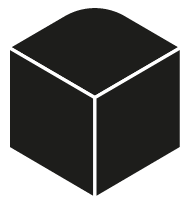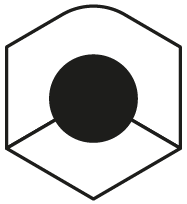LIBERTÉ







 INTERIOR DESIGN
INTERIOR DESIGNBudapest enjoyed a thriving coffeehouse culture during the Austro-Hungarian Empire, around the turn of the 20th century, more than 500 cafés scattered across Budapest. Apart from fair-priced food and drinks, coffeehouses offered a home away from home to the city's fast-growing population. These typically high-ceilinged spaces were also central to social life: they served as common meeting places of talented writers, poets and artists. Some of them spent most of the day in their favourite place, musing or writing at their regular tables.
One of these iconic places the Szabadság café was opened in 1902 in the prestigious V. district, an area peppered with banks, lawyer’s offices within the close proximity of the Parliament. It was favoured by noted Hungarian poets and writers for long decades but it lost its shine during the years. The new owners imagined an interior that reflects the café’s heritage yet appeals to young consumers.
Our aim was to design a high-quality contemporary restaurant with the atmosphere of the ‘30s cafés. We left the counter – the place’s most dominant object – at its original place but we gave it a fresh coverage. The harmonic blend of old and new can be found in the materials and furniture as well.
The mid-century modern elements are paired with custom-made lamps and reinterpreted patterns and materials. The visual identity of Liberté is minimalistic, which compensates well for the elegant interior.
One of these iconic places the Szabadság café was opened in 1902 in the prestigious V. district, an area peppered with banks, lawyer’s offices within the close proximity of the Parliament. It was favoured by noted Hungarian poets and writers for long decades but it lost its shine during the years. The new owners imagined an interior that reflects the café’s heritage yet appeals to young consumers.
Our aim was to design a high-quality contemporary restaurant with the atmosphere of the ‘30s cafés. We left the counter – the place’s most dominant object – at its original place but we gave it a fresh coverage. The harmonic blend of old and new can be found in the materials and furniture as well.
The mid-century modern elements are paired with custom-made lamps and reinterpreted patterns and materials. The visual identity of Liberté is minimalistic, which compensates well for the elegant interior.
LIBERTÉ

Project team: Márton Lengyel, Zsófi Muzsnai, Dániel Illés Pálfi, Oana Pangalos
Set design: Heni Kiss
Graphic design: Márton Lengyel, Zsófi Muzsnai
Client: Baldaszti Group
Area: 300 sqm
Year: 2015
Location: Aulich street, Budapest, Hungary

Budapest enjoyed a thriving coffeehouse culture during the Austro-Hungarian Empire, around the turn of the 20th century, more than 500 cafés scattered across Budapest. Apart from fair-priced food and drinks, coffeehouses offered a home away from home to the city's fast-growing population. These typically high-ceilinged spaces were also central to social life: they served as common meeting places of talented writers, poets and artists. Some of them spent most of the day in their favourite place, musing or writing at their regular tables.


One of these iconic places the Szabadság café was opened in 1902 in the prestigious V. district, an area peppered with banks, lawyer’s offices within the close proximity of the Parliament. It was favoured by noted Hungarian poets and writers for long decades but it lost its shine during the years. The new owners imagined an interior that reflects the café’s heritage yet appeals to young consumers.


Our aim was to design a high-quality contemporary restaurant with the atmosphere of the ‘30s cafés. We left the counter – the place’s most dominant object – at its original place but we gave it a fresh coverage. The harmonic blend of old and new can be found in the materials and furniture as well.
The mid-century modern elements are paired with custom-made lamps and reinterpreted patterns and materials. The visual identity of Liberté is minimalistic, which compensates well for the elegant interior.

 INTERIOR DESIGN
INTERIOR DESIGN ARCHITECTURE
ARCHITECTURE PRODUCT DESIGN
PRODUCT DESIGN